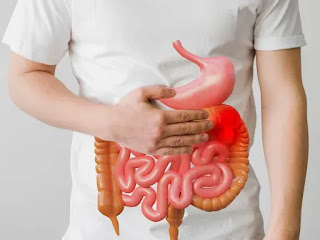Suffering from Neck Pain? Be aware of the Cervical Spondylosis condition you might have.
The majority of the middle-aged and elderly population frequently deal with Cervical Spondylosis. The condition has recently become more common in young adults as well. The primary causes of Spondylosis in young include occupational and lifestyle factors, including poor posture, smoking, excessive levels of stress, etc.
The vertebrae in the neck region of the spine, which make up the spine, experience abnormal wear as a result of cervical spondylosis. Spinal stenosis, a disorder that develops when your spinal canal narrows, includes Cervical Spondylosis.
It's not just typical, but also a common source of neck pain. It has to do with ageing and degenerative changes in the cervical spine's strong, durable cartilage, which cushions the individual bones. In some cases, the damage may be made worse by bone anomalies such bone spurs or growths in addition to age- and wear-related issues. The vertebrae converge on one another, narrowing the space between them, as the cartilage degrades and becomes more brittle.
As a result, each of these spaces experiences abnormal pressure on the nerve bundles that leave the spinal cord to create the primary nerves that nourish different sections of the body. The person consequently feels discomfort, tingling, numbness, and weakness in their arms.
Chronic neck pain that radiates over the shoulder blade is a common symptom. Although involvement of the fingers is uncommon, the pain could extend to the upper arm and downward. Moreover, headaches are typical.
The following are risk factors for cervical spondylosis:
- Age - As people age, cervical spondylosis is a regular occurrence.
- Occupation - The neck is particularly stressed by jobs that require a lot of overhead work, uncomfortable posture, or repetitive neck movements.
- Neck wounds - Cervical spondylosis risk seems to be increased by prior neck traumas.
- Genetic influences - Over time, some people in particular families will go through more of these changes.
- Smoking - Smoking is associated with worsening neck pain.
Most cervical spondylosis patients have moderate symptoms and don't need to make many lifestyle changes to cope with the illness. In fact, a lot of people discover that they can control their pain and symptoms and that their discomfort doesn't necessarily get worse over time.
However, the disease worsens over time for some people. They might experience more severe symptoms like inability to urinate or bowel, as well as difficulty walking. Those with Cervical Spondylosis and myelopathy are more likely to experience this.
However, even in those circumstances, there are treatments that can be used. Consult a doctor so you can keep track of your symptoms and modify your treatment as necessary.
Your spinal cord or nerve roots may suffer lasting harm if cervical spondylosis severely compresses them. Any neck or back pain should not be ignored. You can feel considerably better if you receive therapy for diseases like cervical spondylosis. By visiting a doctor, you can also better understand the issue you're facing and get the care you require.
.png)



Comments
Post a Comment